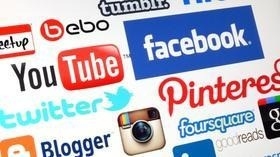What if I told you that memes are the most undervalued, misused, and overlooked marketing tool for businesses both big and small? A picture with a funny caption, motivational quote, or words that create pride for a certain group can be the most powerful use of communication between companies and customers, and the social media manager and the followers who like or follow the page. Memes are often looked at as non-professional in the business world, but the companies who effectively use them, could very well see a strengthening bond between them and their consumers.
If you’re on Facebook, you’ll see your friends post memes. Often these pictures have a theme that makes the poster prideful in what he or she believes or what they consume and own. I often engage with the local car scene being a car enthusiast. Owners of Honda Civics will post all the content they can find that assures them they have the best car. The same goes for Mustang owners and any other car brand you can think of. So why aren’t businesses doing the same?

Taking a jab at Chevrolet, a Ford pickup truck owner created a meme that shows a Chevy pickup getting pulled out by the more dominant Ford. While at the corporate level, Ford’s official social media accounts probably wouldn’t post such a picture, not only to save face, but getting into a Twitter war, or Facebook feud, would come across as very childish and unprofessional. But for a Ford dealership, creating a similar post that may not be as straightforward, might be a good way to pry potential Chevrolet owners away from buying a Silverado, and instead seriously consider a Ford F-150.

Who doesn’t love Oreos? By far the best cookie on the market, and as the meme suggests, you simply cannot have just one Oreo, it’s impossible. While Oreos are in a class of their own, companies can learn from the loyalty many buyers have towards the brand. There’s a pride in the cookie and those who consume them. You may eat Chips A-Hoy chocolate chip cookies, but everyone knows Oreos is the most satisfying cookie, especially with milk.
What we are seeing in marketing, is the growing loyalty and love for certain products and brands. These memes re-inforce the belief of consumers that what they have is the best. Memes aren’t just for products but also activities. People often post pictures with captions that make them feel superior for participating in a certain hobby, while others are looked down upon for not taking part.
The bond between companies and customers is beginning to get more intimate. Not in terms of romance, but a friendship and loyalty is starting to develop, and it can only get stronger with more customers joining the ranks of Facebook pages and sharing their love for a product or hobby. This is making it easier on businesses to acquire repeat customers, especially with the help from those business’ social media accounts who actively engage with their followers.






